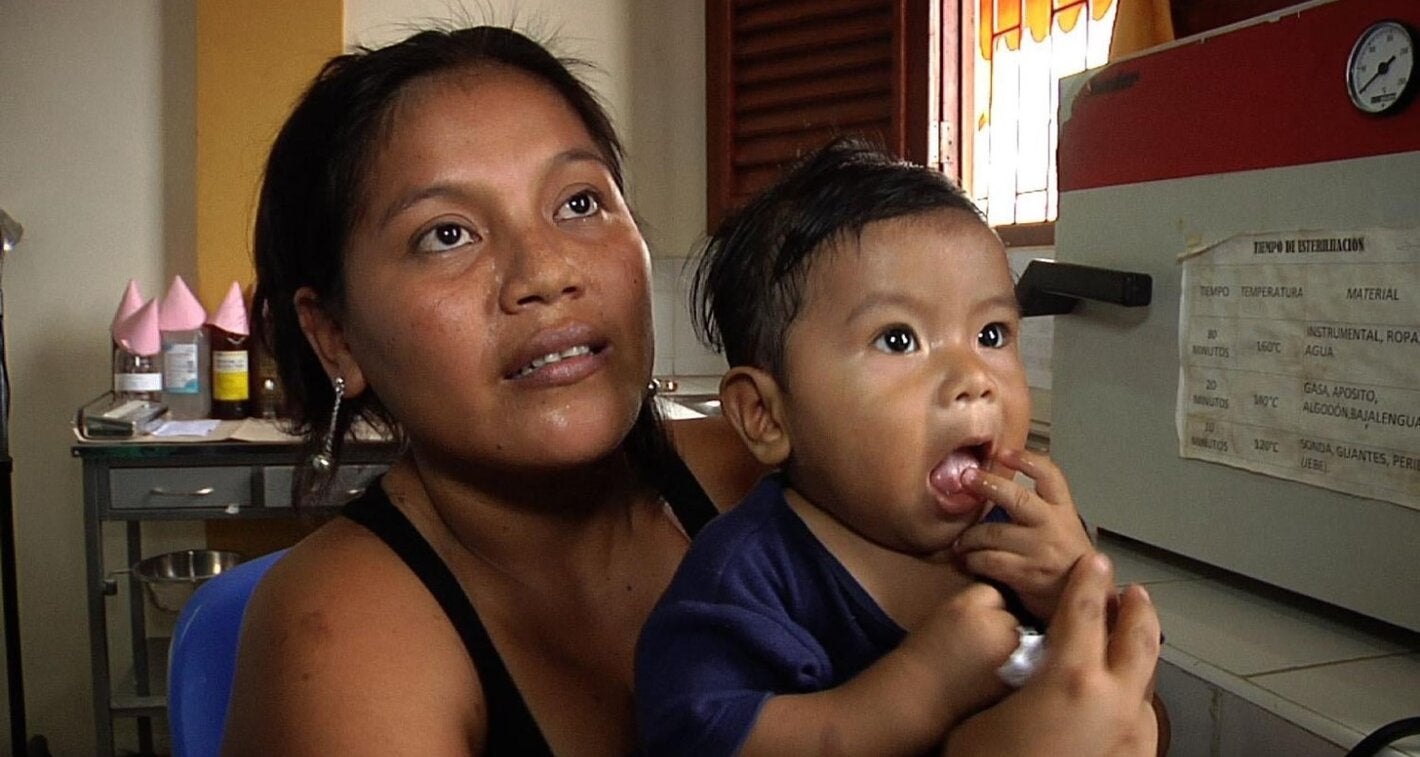
Washington, D.C., 01 March 2015 (PAHO) - USAID sponsored a course for more than 40 delegates from the Ministries of Health and Finance from the Dominican Republic, Guatemala, Guyana, Haiti, Honduras, El Salvador and Peru to learn about strengthening health systems and implementing Universal Health Coverage in March, 2015.
Within the framework of the event, we took the opportunity to talk to representatives of some of these countries to learn about their experiences in reducing health inequities, which is the objective of the movement A Renewed Promise for the Americas, of which PAHO/WHO is a member.
In an interview with delegates from the Ministry of Health Peru, we learned about some of the advances that have been made in reducing maternal mortality.
Before the beginning of Comprehensive Health Insurance in 2002, the great majority of the Peruvian population was not covered by any insurance, leaving many of the country's inhabitants without access to health care. Between 1997 and 2001, with the growth of the economy, new public programs began providing support to the population that previously lacked health protection.
In 2002, the mother-child insurance and school insurance programs were joined together to form what today is called "Comprehensive Health Insurance" (Spanish acronym "SIS"), which in its first phase was aimed at covering the poorest population, with a special focus on mother-child care. Later on, with the passage of the universal health insurance law, coverage would be extended to the entire population regardless of its socio-economic status.
At present, about 75% of the Peruvian population is insured, with public insurance covering more than 40% of the population. In rural areas, which are the most vulnerable and the hardest to reach, this coverage now stands at 90.35%.
Today, all expectant mothers and children between the ages of 0 and 3 are automatically covered by SIS, as long as they have no other insurance. The goal of SIS is to cover the entire population that still lacks coverage by 2021, says Javier Alberto Castillo Valdivia, the doctor who supervises the risk management and service evaluation functions of the Comprehensive Health Service of Peru.
Initiatives like the SIS have contributed to reducing maternal mortality in Peru from 118.3 per 100,000 live births in 2002 to 89 per 100,000 live births in 2013. The number of institutional births has risen from 57.5% in 2000 to 88% in 2013 — one of the reasons why maternal mortality has been reduced. In rural areas, where the maternal mortality was higher, there has been a sharp increase in institutional births, going from 23.8% in 2000 to 69.8% in 2013. In urban areas there has also been an increase from 82.4% in 2000 to 96.8% in 2013.
With the increase in coverage, the demand for health services also has increased. The main challenge facing the Ministry at this point is to strengthen the public capacity to meet this demand.
Peru and "A Promise Renewed for the Americas"
Peru was one of the countries that signed the Declaration of Panama in September 2013, committing to reducing inequities in maternal, infant and child health. With the signing of this Declaration by 27 countries of Latin America and the Caribbean, the A Promise Renewed for the Americas movement was formed as a support mechanism for helping countries reduce inequities in the area of health.
About A Promise Renewed for the Americas
A Promise Renewed for the Americas (APR-LAC) is a movement that seeks to reduce the profound inequities in reproductive, maternal, neonatal, child, and adolescent health that persist in Latin American and the Caribbean.
APR-LAC collaborates with key regional stakeholders, including governments, international development agencies, civil society representatives, academic institutions, private sector, professional institutions, and non-governmental organizations to catalyze and support country-led efforts to decrease gaps in access to quality health care. As a regional movement, APR-LAC works in coordination with the global A Promise Renewed initiative.
The movement is convened by the Inter-American Development Bank (IDB), the Pan American Health Organization/World Health Organization (PAHO/WHO), the United Nations Children's Fund (UNICEF), the United States Agency for International Development (USAID) and the World Bank.
By Diana Valcárcel for A Promise Renewed for the Americas



